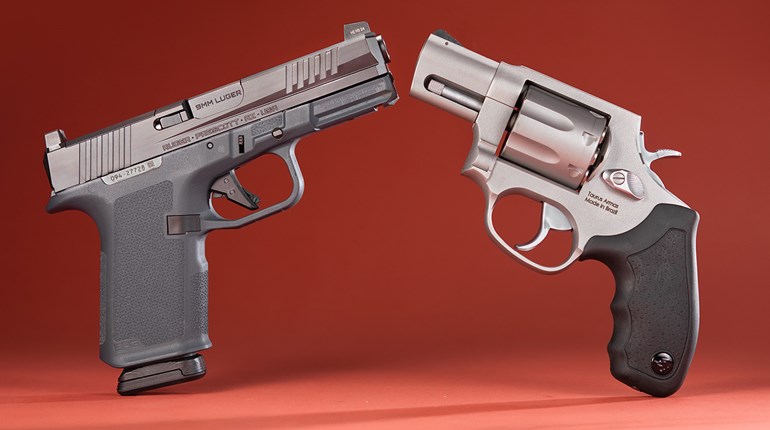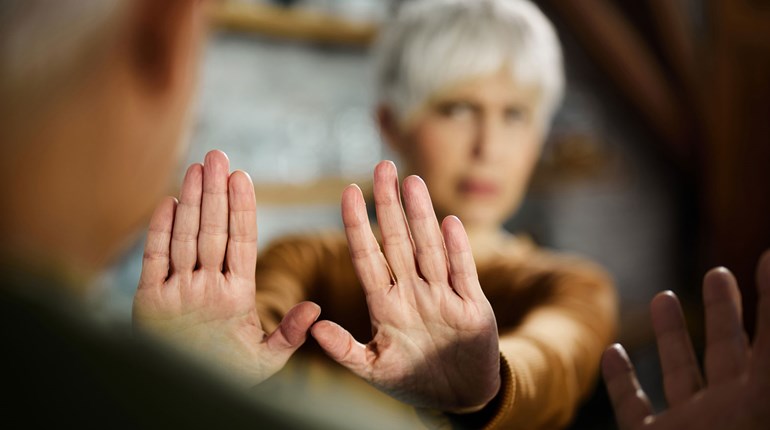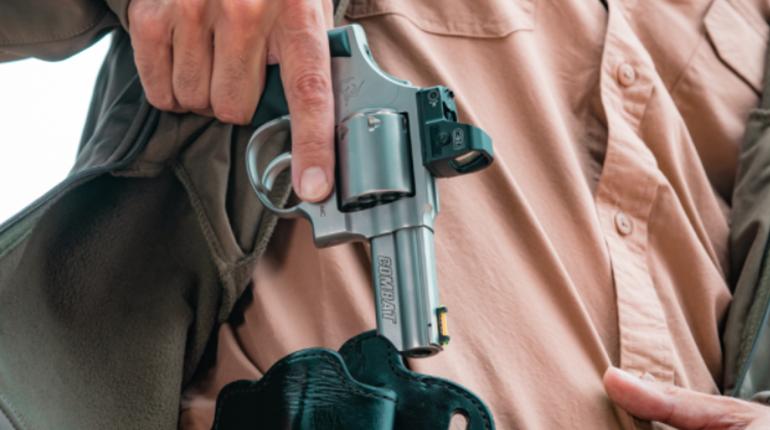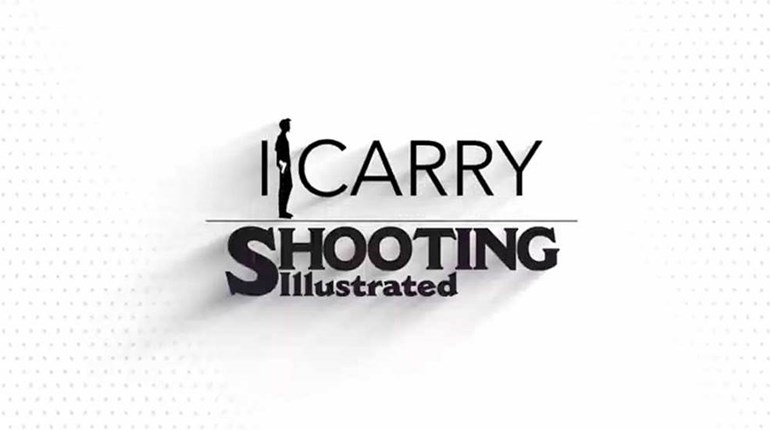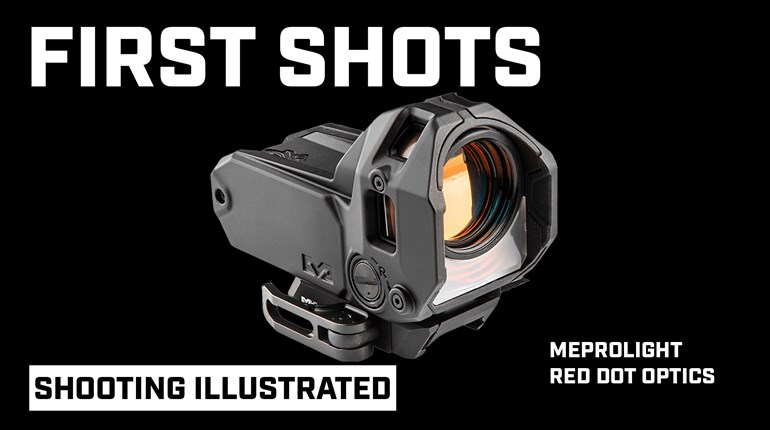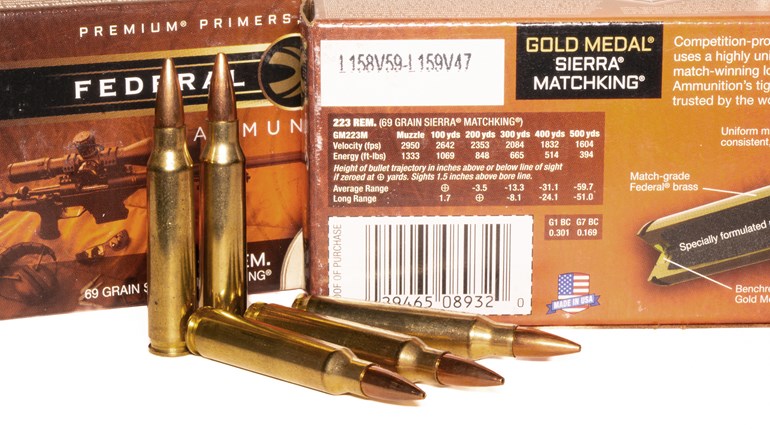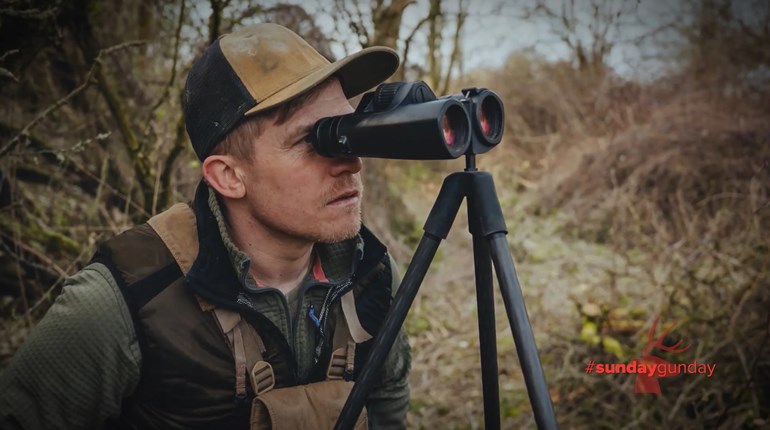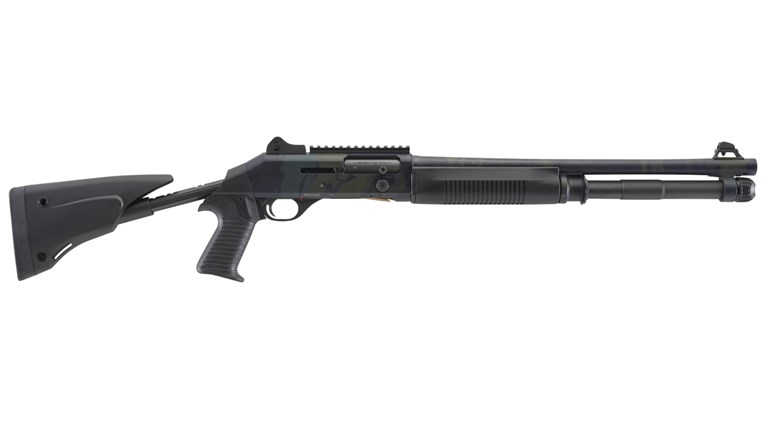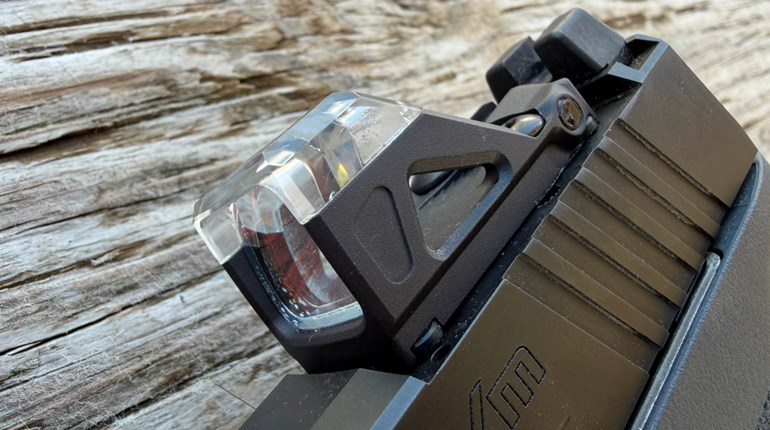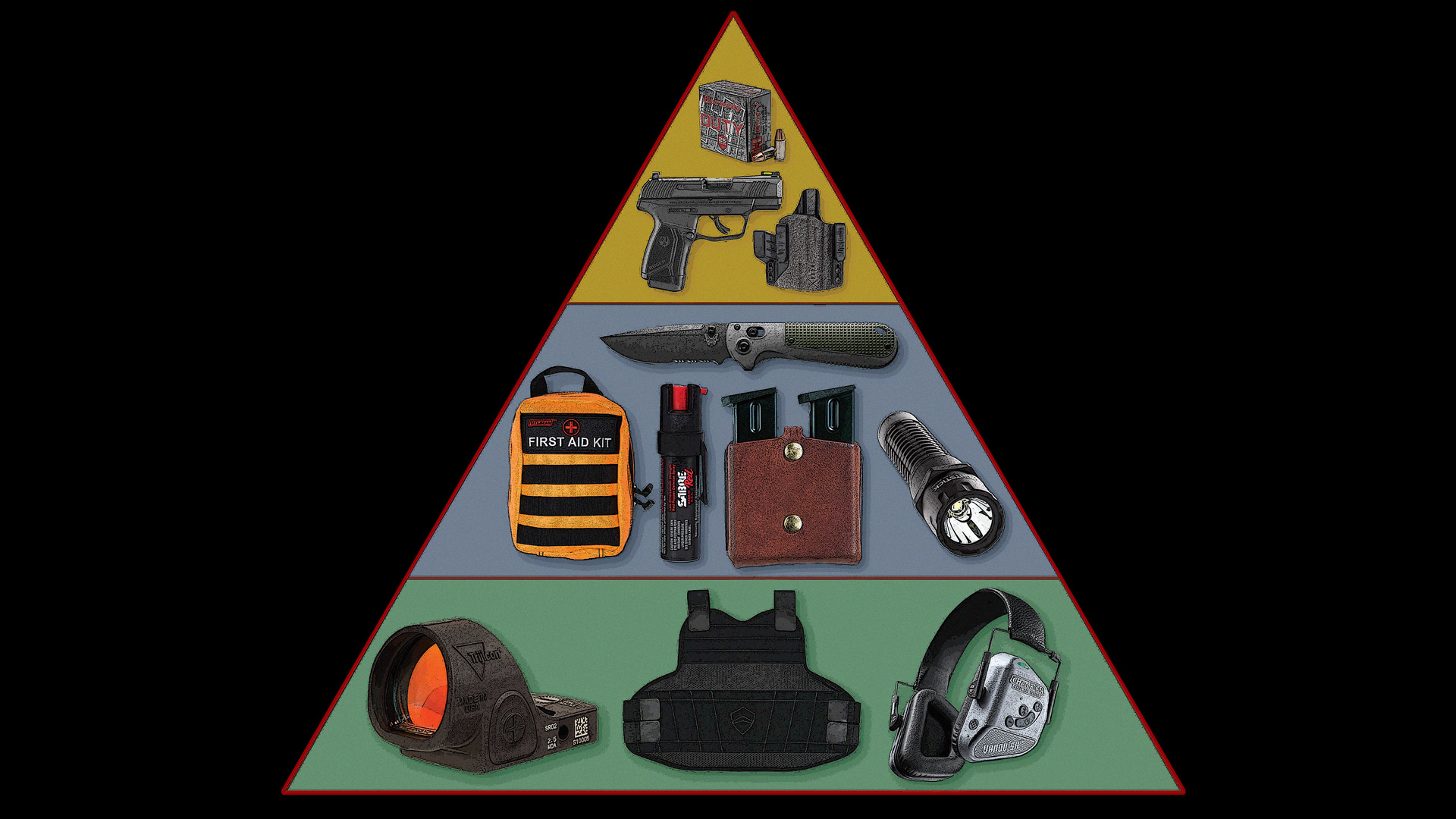
It is easy to go down the rabbit hole when it comes to tactical gear or self-defense gear, with advertising and marketing constantly vying for the consumer’s attention and money. It’s tricky deciding whether a piece of kit is truly needed for the mission at hand, and without a good filter, it is easy to overlook something needed or be distracted by something not needed. I get asked this question a lot, what piece of gear do I use for this or that job? If time permits, I like to address the question by defining the mission. The tiered system I use represents different levels of importance and functionality when preparing for self-defense or any operational task. Always start by defining the mission: it makes it easier to procure the right gear.
In matters of self-defense, the gear can be categorized into three distinct tiers: mission essential, mission critical and mission enhancing. Each tier serves a specific purpose in ensuring you are properly equipped for various scenarios, from the bare minimum needed for survival to additional gear that enhances effectiveness. Let’s start by briefly defining each of these tiers.
“Mission essential” is defined as the absolute minimum gear needed to accomplish the task or survive the situation. Its purpose is foundational, and without it the self-defense mission is unlikely to succeed. Without this gear, effectively defending against or stopping an attack is more like wishful thinking.
“Mission critical” is defined as gear that is not part of mission essential, but becomes essential in specific circumstances or extended engagements. Its purpose is to increase effectiveness and survivability in more dynamic or unpredictable circumstances. Think of this tier as enhancing performance and readiness, especially in more challenging or prolonged encounters.
“Mission enhancing” is defined as gear that improves overall capability, convenience or protection, but isn’t necessary for survival or success. Its purpose is efficiency, comfort or adaptability, but the mission is still achievable without it. While not required, this gear can provide additional advantages and optimize performance in specific scenarios.
Let’s take a closer look at each of these tiered categories, starting with mission essential. This is the absolute minimum gear needed for self-defense. Mission-essential gear focuses on survival and basic functionality in a deadly-force encounter. Without it, self-defense is compromised.
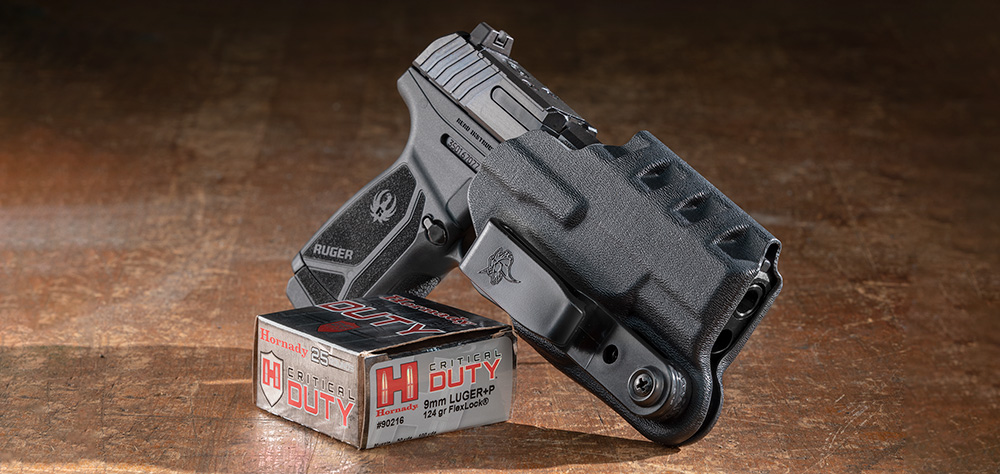
The pistol or other primary defensive tool is the most important item in a self-defense scenario. This is the first line of defense and the tool to rely on for stopping an attack.
Next, a pistol is useless without ammunition. Carry enough of a handgun with an adequate magazine capacity, although how much capacity is enough is harder to define. Consider shooting under high stress, facing multiple attackers, prolonged engagements and non-fight-stopping hits as a good start. A magazine with a capacity of 10 rounds should be a minimum, in my opinion.
A quality holster ensures the pistol is consistently carried, easily accessible and safely stowed, in addition to providing retention and ensuring the pistol is ready when needed. While it isn’t a physical item, knowledge and skill in how to handle the pistol, engage in self-defense scenarios and understand the legal aspects of the defensive use of force are equally essential.
Next is mission-critical gear. This is gear that may not be necessary in every situation, but becomes vital in more specific or prolonged encounters. Mission-critical gear enhances your effectiveness and readiness, especially in dynamic environments or even in emergencies.
A knife serves as both a backup weapon and a practical tool. In the event the primary weapon fails or runs dry, a knife gives additional or alternate means of defense. Whether a fixed-blade knife or a folding knife or both, a knife can potentially be a better option than a pistol in some cases.
In some self-defense scenarios, it may be necessary to reload, or at the very least to “top off” after the attack has been stopped. This ensures the highest state of readiness should there be another attack from the suspect’s friends or other unfriendlies. Having at least one spare magazine ensures preparation for the unexpected, whether facing multiple assailants or needing to reload under stress.
In low-light or dark environments, a tactical flashlight becomes mission critical. It helps locate and identify threats, navigate and stay aware of the surroundings.
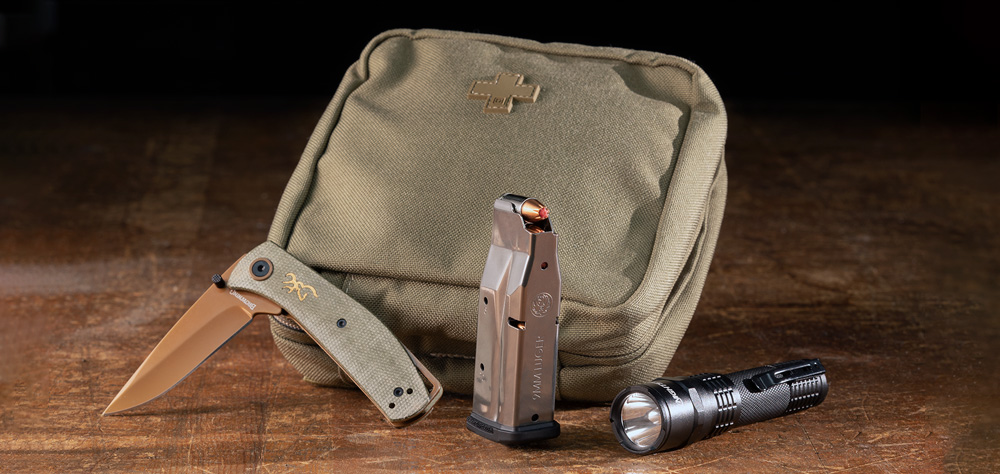
There are some situations that do not call for deadly force, but they are still dangerous. A less-lethal option, such as OC spray, can provide a chemical barrier. They are great for locations that prohibit firearms as a basic means for self-defense.
A simple trauma kit, (aka individual first-aid kit or IFAK) including items like a tourniquet, pressure bandages and chest seals, could be critical for self-defense. In any violent encounter—whether you are injured or you witness someone else being injured—immediate medical attention can be lifesaving. There is a greater chance of needing a med kit than a pistol for everyday life.
The last tier is mission-enhancing gear. This is gear that improves overall capability but isn’t absolutely necessary for survival. Mission-enhancing gear focuses on convenience, adding protection or improving effectiveness in specific situations.
While iron sights on a handgun are essential, adding a red-dot sight can enhance accuracy, particularly at longer distances. Red-dot sights are quite effective at speeding up target acquisition. Plus, they provide target focus and binocular vision—both of which are major tactical advantages when shooting under stress.
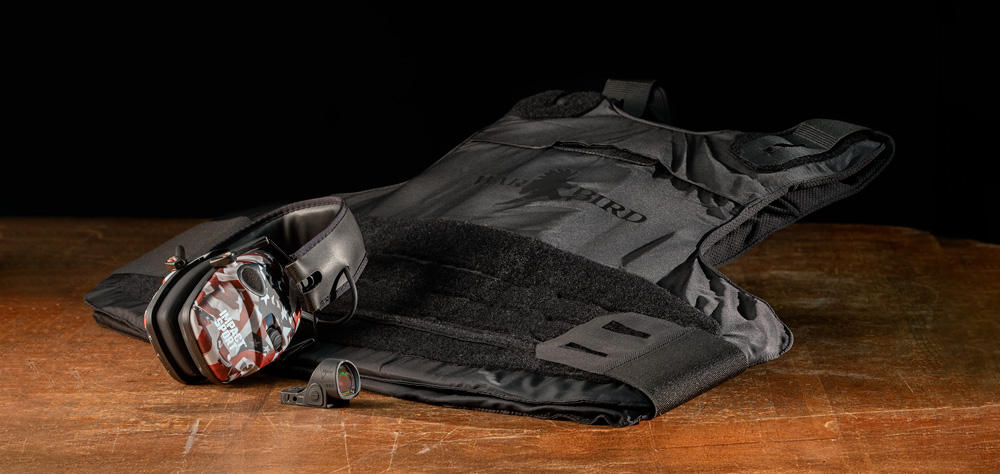
Wearing body armor can significantly enhance survivability, especially in situations where pistols are involved. It’s not always practical, but in high-risk environments or during specific events, it can mean the difference between life and death. Attending church services during certain anniversaries or occasions makes it a no-brainer for me to improve my survivability while protecting my family.
In a self-defense scenario, there will not be time to don ear protection. In a home-defense response, there might be the opportunity prior to a potential confrontation. Electronic ear protection also improves situational awareness by amplifying ambient noise. Spending time at the range, electronic ear protection is obviously important to save hearing or stop hearing loss.
Here’s how it all comes together: When funds are not available or working with a tight budget, defining the mission will provide a clearer picture of what is actually needed. Start with a comfortable price point, but with a buffer for unexpected costs such as shipping or taxes. If looking for a self-defense pistol to carry, start with something in your price range. Knowing mission-essential gear includes a pistol, ammunition and a holster allows specific focus on finding the best fit for the defined needs. It may take time to recoup the initial investment, so while waiting, start training. Acquire the knowledge and skills on basic operation and marksmanship technique.
As confidence grows, consider adding to the basic loadout with knives, OC spray and medical gear. Expanding knowledge and skills to other self-defense tools creates multiple options during altercations. Not every altercation is a deadly-force threat, and taking steps to de-escalate and defuse the situation are strong tactics to add to a growing list of knowledge and skills.
As confidence continues to grow, it allows for greater appreciation of mission-enhancing gear. In the search for the everyday-carry pistol, being optic-ready provides the option to go down that road at some point, but it’s not something with which we have to start. Remember, mission essential for everyday carry would be a reliable compact pistol with enough magazine capacity. If it is optic ready, then adding the optic becomes easy when the time comes.
Body armor is another investment that might produce low return, until it is absolutely needed. It is one I debate with others regularly. As tensions rise however, it does become more of a consideration. I just had this conversation with a church-security team. For such situations, I would elevate this piece of gear to at least mission critical. In this case, my mission is to move toward the sound of gunfire to protect, therefore wearing body armor to increase my survivability makes sense. I’m putting myself in greater danger on purpose. For everyday use, though, it is hard to justify and the reason it is only mission enhancing. While body armor may be expensive, what it protects is priceless. Also, barring extremely unlikely circumstances, it is a one-time purchase.
When it comes to self-defense, understanding the distinction between mission-essential, critical and enhancing gear helps you prioritize what’s most important in any situation. It allows the initial investment to go further. It also reduces the chances of spending funds on poor choices or flat-out unnecessary items. Focus on the basics first—pistol, ammo and holster. Start training with these as they are the absolute minimum. As preparedness and confidence grows, adding critical and enhancing gear can increase effectiveness and adaptability to a variety of self-defense scenarios.
It is easy to get overwhelmed with so many options available today. Keeping focused on the basics or essentials will prove invaluable over time.












